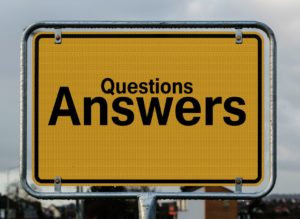It has been a little over a year, but the world is still adjusting to functioning during a pandemic and the events industry space is no exception. In fact, 89% of companies have reported that they cancelled in-person conferences because of the pandemic and replaced them with virtual conferences.
Just like there was a pivot when the pandemic started, now that people are getting vaccinated, we are seeing a new pivot. And the new norm for the events industry is hybrid events.
What Exactly is a Hybrid Event?
The simple answer to this question is that hybrid events bridge the best of both worlds of in-person and virtual conferences. This approach has allowed brands to reach a wider audience.
Taking it a step further, it’s important to note that hybrid events offer unique experiences for both the in-person components and the virtual components. A common mistake is that some brands stream their in-person presentations online and call it a hybrid event. So, while hybrid events bridge the two worlds, they also treat them separately to foster high engagement rates and provide a great experience for all attendees.
What Makes a Hybrid Event Stand Out?
Let’s discuss the basics of what makes a good hybrid event since it’s a relatively new concept.
- Hybrid events embrace audience engagement. For the in-person potion, it’s easy to get attendees to participate and network. Gleaning from what we know about virtual events, attendees can be engaged with polls and Q&A sessions.
- Hybrid events should be insightful. There definitely have been brands who create conferences for conferences sake and this mentality needs to be changed. Key takeaways and opportunities need to be conveyed to get people to sign up for your event.
- Hybrid events need to prioritize speakers. High profile and interesting speakers are what sparks the interest of a potential attendee. So, allocate enough time to identify and recruit speakers and feature them on all of your event material.
- Hybrid events should be flexible and offer attendees a variety of in-person and online sessions that attendees can choose from. Many event planners use multiple tracks in the virtual part of the event so that attendees can choose their topics.
What Goals Do Hybrid Events Accomplish?
One thing that people love about events in general is that they accomplish many goals within one strategy. Hybrid events achieve more than only in-person events or only virtual events as hybrid events can reach more people. Check out the most common goals we see and determine if you would like to accomplish these same goals for your own brand.
- Thought leadership
- Lead gen
- Monetization
- Brand awareness
- Networking
- Reusable content
What Are the Next Steps For Me To Host a Hybrid Event for My Brand?
Have we gotten you excited about hybrid events!? If you’re ready to get moving on your own such event, here is a list of your next steps so that you can pull off a hybrid event with smashing success. Note that from ideation to the day your event takes place, you should give yourself at least 3 months to execute it properly.
- Brainstorm a name for your event
- Pick a location for the in-person portion
- Choose a platform like vConferenceOnline to stream the virtual portion of your event
- Create a landing page where you will collect registrants
- Reach out to thought leaders that align with the theme of your event and recruit them to present
- Make a marketing plan to promote your event
Have you attended a hybrid event? We’d love to hear all about it in the comments below!
